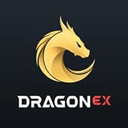1 Level
41 Review
50 Karma
Review on Steem by Arun Kaul

A social media platform on Blockchain - Steem
Steem is a blockchain database which supports community building and social interaction with cryptocurrency rewards. Its cryptocurrency powers the application Steemit, which is native to the Steem blockchain.
It acts like a community hub or social media outlet filled with content creators like reddit or Medium. STEEM coins are used to reward such content creators and other active members of the community in a transparent and unbounded way based on the contribution.
In the beginning, one of the founders of the network, Daniel Larimer was the lead developer of the Steem project. He was known to be a good developer, but a bit shady when it comes to proving facts. Daniel also was the one that created the BitShares and EOS projects.
While there is no official roadmap as of yet, I was able to find some information. These are a few updates that are supposed to be implemented soon in the network – Decentralized Exchange, Payments Through Escrow, Hierarchical Private Key Structure, Multi Sig Authorities, Smart Media Tokens (SMT) etc.
Steem blockchain is tailor made from the ground up so it can pass the barriers to adoption and monetization of social media based economies. The main challenge for the Steem cryptocurrency is to come up with an algorithm for scoring and keeping tabs on individual contribution But there is no official roadmap.
Due to the consensus protocol (DPoS), the network can be considered as a semi-centralized blockchain. That is because the normal user can’t be part of the consensus mechanism. In a Delegated Proof of Stake network users need to delegate other users to be part of the consensus. This brings uncertainty with it, because voters can be bought, and users can have more than 1 delegated node.
The interesting thing about the network is that although it is using maybe the most popular hashing function (SHA256), which is also used by Bitcoin, it can’t be mined. New coins can be issued only by delegated nodes as only they are full nodes and everyone else acts as a lightweight node.
Pros
- There is no transaction fees for Steem. Yes, you can send and receive STEEM without paying any transaction fees.
- Steem is very easy to start and navigate through the platform
- Possibility to earn passive income through becoming a content creator
Cons
- The developers of Steem are suspected of controlling the majority of the coin supply.
- The network uses the dPoS consensus, meaning that big holders can vote for the same people
- There is a big activation period where you need to wait up to 2 weeks for an account to be activate. If you would like it instantly activated you have to pay a premium
New products
Comments (1)

October 02, 2019
No I don't thins It is very easy to start and navigate through the platform! Navigating the content on Steemit is a bit hard.










